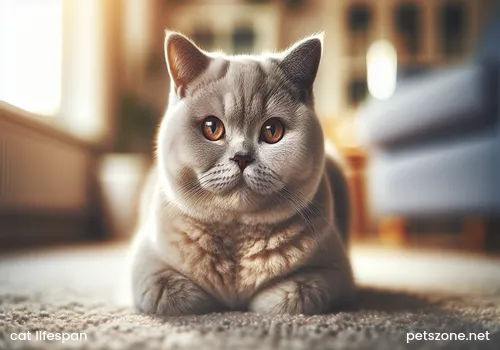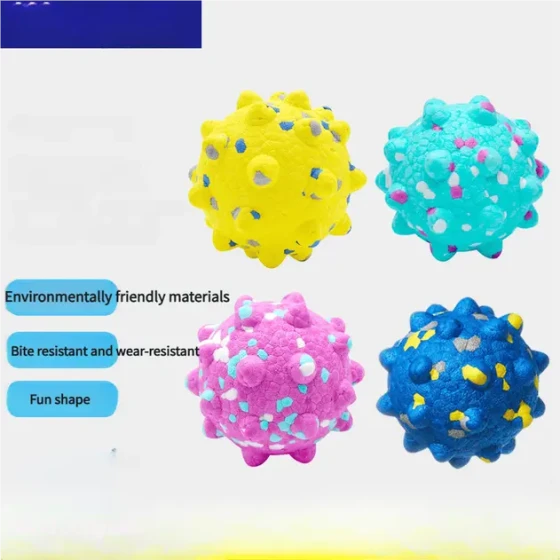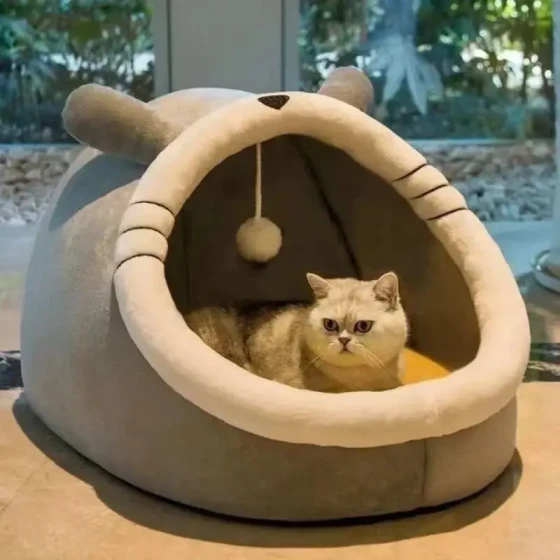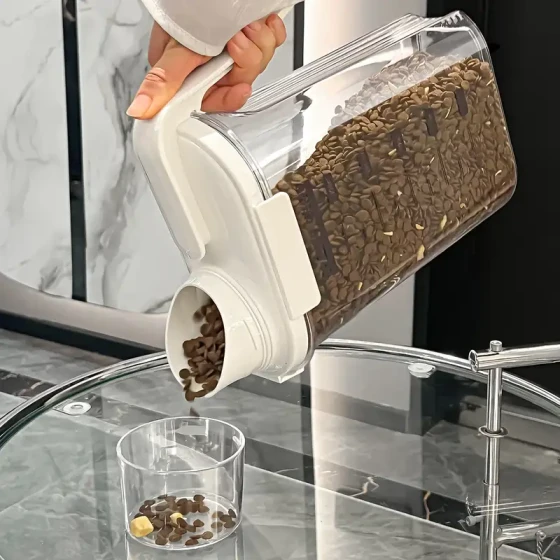How long do cats generally live_How many years do house cats live on average
The lifespan of house cats is a topic many “pet owners” are very concerned about. Generally speaking, healthy house cats that receive attentive care live on average 12 to 15 years, and quite a few can live up to eighteen or nineteen years, with some even reaching their early twenties. Of course, this number is not fixed; a cat’s lifespan is affected by many factors, just like human lifespan varies due to living environment, dietary habits, genetics, and other conditions.
So, what exactly determines how long a cat can accompany us? There are quite a few “tricks” hidden inside.
Key Factors Affecting Cat Lifespan
The length of a cat’s life is not entirely predetermined by nature; many acquired factors can have significant influence. Understanding these factors can help us better care for our cats and allow them to live as healthily and long as possible.
1. Living Environment: Homebody or "Rogue"?

This is one of the most crucial factors affecting cat lifespan. Cats living indoors and not going outside generally live much longer than cats that frequently go out or even stray. Imagine, although the outside world is fascinating, it is also full of dangers.
- Indoor cats: The average lifespan is usually between 12 to 18 years, and some can even live over 20 years. They live in a safe, stable environment with ample food and clean water, greatly reducing risks of injuries and illnesses.
- Outdoor or stray cats: Their average lifespan is much shorter, possibly only 2 to 5 years. They may face traffic accidents (such as being hit by cars), injuries from fighting with other animals (the saying goes “the brave win in narrow paths,” but the cost of injuries can be high), exposure to various infectious diseases (the wild environment is complex and prone to cross-infection), ingestion of toxic food or substances, and even malicious harm. The outside world is a harsh challenge for cats without human protection to survive.
Therefore, although some cats long for the outside world, for their health and safety, providing a rich and interesting indoor environment is usually the best choice to extend their lifespan.
2. Genetics and Breed
A cat’s genes are like an "instruction manual," determining their innate constitution and potential health problems.
- Mixed-breed cats (countryside cats): They usually have broader genetic diversity, so the risk of inherited diseases is relatively lower, and their average lifespan may be longer than purebred cats. Just like the common saying that "mongrels" may be tougher, many healthy countryside cats can live a long time.
- Purebred cats: Some purebred cats, due to inbreeding or other genetic reasons, are prone to certain hereditary diseases, affecting their lifespan. For example, Scottish Fold cats generally have cartilage development abnormalities that may cause joint pain and mobility issues. Hairless cats (Sphynx) have a relatively shorter average lifespan; studies show their expected lifespan may be only 6-7 years, possibly related to susceptibility to diseases like cardiomyopathy. Meanwhile, breeds such as Burmese and Birman cats are known for relatively long lifespans (average over 14 years). Of course, breed is only a reference, and individual differences are significant.
3. Neutering Surgery
Neutering cats has a positive effect on their lifespan.
- Neutered cats: They generally live longer than unneutered cats. Neutering prevents reproductive system-related diseases, such as uterine infections and mammary tumors in female cats, testicular tumors in males. Neutered male cats are less aggressive, reducing the risk of outdoor fights and lowering the possibility of disease transmission through fighting. Unneutered cats in heat may go outside looking for mates, increasing chances of accidents and danger.
4. Diet and Weight Management
The saying "disease enters through the mouth" also applies to cats. Providing a balanced, high-quality cat food ensuring adequate protein, fat, vitamins, and minerals intake is crucial for maintaining health.
- Healthy diet: Reasonable nutrition helps cats maintain ideal weight, minimizing health problems caused by obesity, such as diabetes, heart disease, arthritis, etc. Like humans, "watch your diet and exercise" is the key to health.
- Water intake: It is also very important to ensure cats have access to clean, fresh water at all times, which helps prevent urinary tract diseases, especially in male cats.
5. Regular Checkups and Medical Care
The development of modern veterinary science provides strong support for cats’ health. Regular health checks can help vets detect potential diseases early and treat them promptly, thus extending cats’ lifespan.
- Vaccinations: Following vet recommendations for vaccines can effectively prevent some fatal infectious diseases.
- Parasite control: Regular internal and external deworming protects cats from parasite infestations.
- Dental care: Cats also need teeth brushing or dental products. Dental problems can cause pain, affect eating, and even lead to systemic diseases.
- Prompt treatment when ill: Cats endure pain well and sometimes illness is not easily noticed. As owners, careful observation is needed; upon noticing abnormalities, take cats to the vet promptly without delay.
6. Exercise and Mental Stimulation
Whether indoor or outdoor cats, maintaining adequate exercise and sufficient mental stimulation is vital for their health and happiness.
- Exercise: Playing not only helps cats maintain healthy weight and muscles but also expends energy, reducing stress and destructive behavior caused by boredom. Cat wands, small balls, laser pointers (note: finally let the cat "catch" the toy to satisfy hunting desire) are good choices.
- Mental stimulation: Providing cat trees for climbing, scratchers to satisfy scratching instincts, hiding treats for “hunting” all enrich their daily life, preventing boredom and anxiety, keeping them happy. A happy and healthy cat often lives longer.
Comparing Cat Age to Human Age
Many want to know how old their "little cutie" is in human years. Although there is no perfect formula, a widely accepted conversion method can be roughly referenced:
- 1 month old cat ≈ 1 year old human
- 3 months old cat ≈ 4 years old human
- 6 months old cat ≈ 10 years old human
- 1 year old cat ≈ 15 years old human
- 1.5 years old cat ≈ 21 years old human
- 2 years old cat ≈ 24 years old human
- Afterwards, each additional cat year is approximately equal to 4 human years.
For example, a 10-year-old cat approximately equals a human of 15 + (10-1) * 4 = 51 years old. A 15-year-old cat roughly equals a human of 15 + (15-1) * 4 = 71 years old. Calculated like this, doesn’t it feel like your household "senior player" is already a grandpa or grandma?
How to Determine a Cat’s Age?
If you adopt a cat of unknown age, some external features can help roughly judge its age:
- Teeth: This is a commonly used method. Kittens start growing milk teeth at 2-3 weeks, fully grown by 4-5 months. Around 5 months, they start replacing with permanent teeth, which mostly complete by about 6 months. Adult cats’ teeth are usually white and sharp. With age, teeth gradually show wear and tartar, turning yellow. Senior cats over 10 years may have more severe wear and even tooth loss.
- Eyes: Kittens have clear and bright eyes. With aging, eyes may become slightly cloudy and develop senile changes like cataracts.
- Fur: Kitten fur is usually soft and shiny. Older cats’ fur may become coarse, dry, and gray hairs might appear around the mouth and body.
- Muscle and body shape: Young cats have developed muscles and agile posture. Older cats may show muscle loss, prominent shoulder bones, and slower movement.
Of course, these methods only offer rough references. The most accurate way is to take the cat to a vet for professional evaluation.
Common Questions and Answers
Q1: Do cats really have "nine lives"?
There is a saying "cats have nine lives," but this is an exaggeration describing cats’ agility and ability to evade danger. In reality, cats have only one life and follow the normal cycle of birth, aging, illness, and death like all living beings.
Q2: Which lives longer, male or female cats?
Generally, female cats’ average lifespan may be slightly longer, possibly due to hormone levels and males being more prone to injury from fights. After neutering, the lifespan differences between genders diminish.
Q3: How long can a house cat survive if abandoned and becoming a stray?
The harsh fact is that a house cat once abandoned has far less survival ability than a long-term wild stray cat. They are not adapted to harsh outdoor conditions, lack hunting experience, and are more prone to danger, hunger, and disease. Research shows abandoned house cats have very short average lifespans, many cannot survive past one year. Therefore, owning a cat is a responsibility, please do not easily give up your pet.
Q4: How to know if my cat has entered senior years?
Cats enter middle age at about 7 years and are considered seniors after 10 years. After entering senior years, cats may reduce activity, sleep more, possibly gain or lose weight, and experience declines in vision, hearing, smell, plus teeth and joint problems. Regular checkups are key to detecting senior diseases.
How to Help Your "Master" Live Longer?
Having understood factors affecting cat lifespan, what can we responsible “pet owners” do to help? It’s not complicated; the key is providing a stable, quality life.
- “Indoor housing” is the way: Try to keep cats indoors as much as possible to avoid outdoor risks.
- Balanced diet and weight control: Choose high-quality cat food suitable for their age and condition, feed regularly and in portions, prevent obesity. Always provide clean drinking water.
- Regular checkups and early treatment: Take cats to the vet annually for health checks, vaccinations, and deworming. Seek prompt medical care upon any abnormalities.
- Neuter at the right time: If no breeding plans, recommend neutering cats at an appropriate age.
- Provide a rich environment: Prepare cat trees, scratchers, toys to make indoor life less boring, satisfying climbing, scratching, and playing instincts, keeping body and mind healthy.
- Pay attention to mental health: Spend more time playing and interacting, build a close bond to relieve stress and anxiety.
- Meticulous daily care: Regular grooming, nail trimming, ear cleaning, dental health monitoring help detect health issues earlier.
In summary, the average lifespan of house cats can reach over a dozen years or longer under good care. Like raising children, providing a safe environment, healthy diet, sufficient medical protection, and loving companionship is the best way to extend a cat’s life and ensure its happiness. Hopefully, every “pet owner” can share more wonderful moments with their cats!



